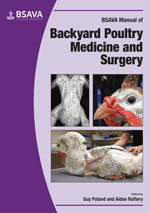
Full text loading...

Musculoskeletal and neurological diseases are extremely common in poultry and often cause similar signs. This chapter provides a synopsis of the common diseases encountered in veterinary practice, and covers related soft tissue and nutritional disorders.
Neurological and musculoskeletal disorders, Page 1 of 1
< Previous page | Next page > /docserver/preview/fulltext/10.22233/9781910443194/9781910443194.18-1.gif

Full text loading...









